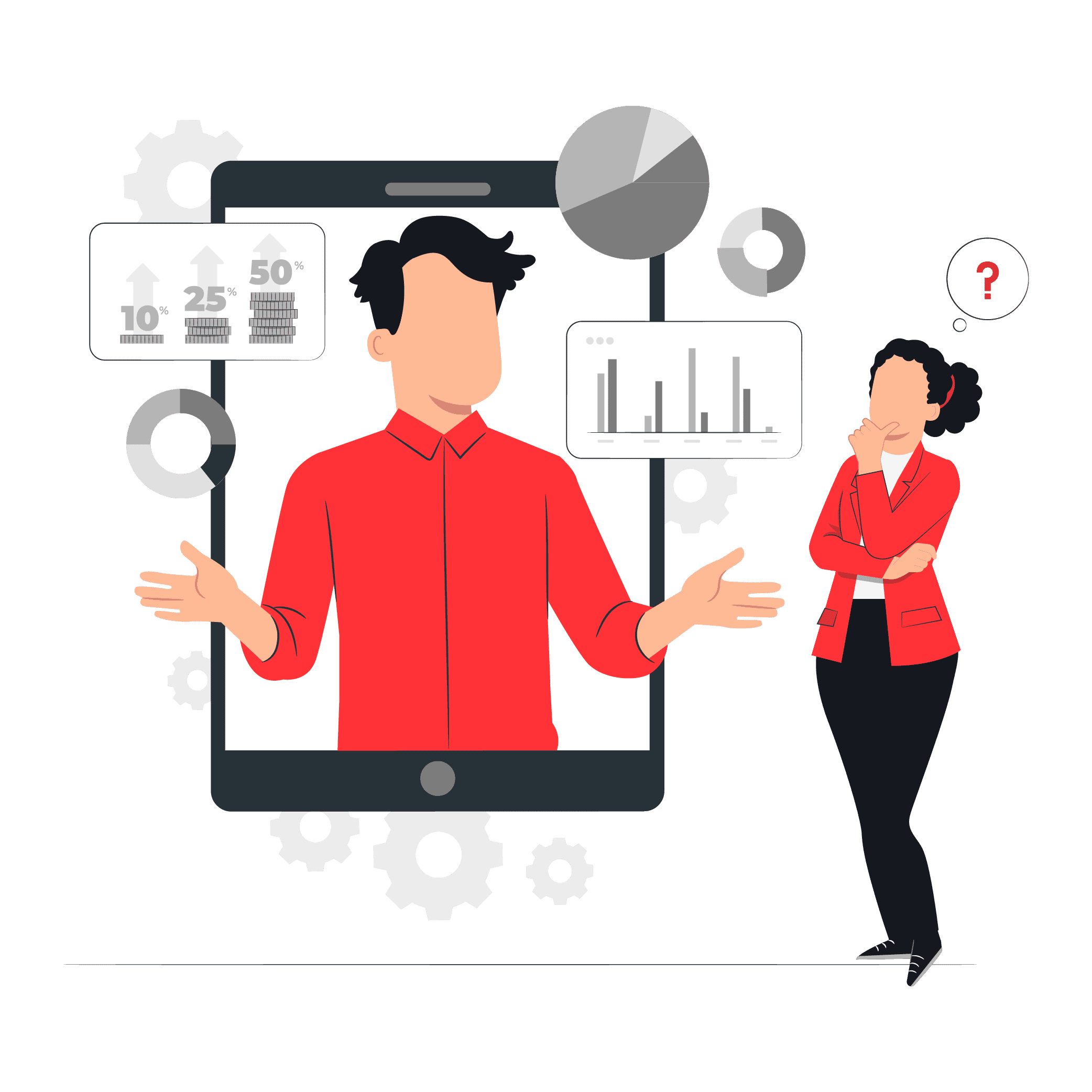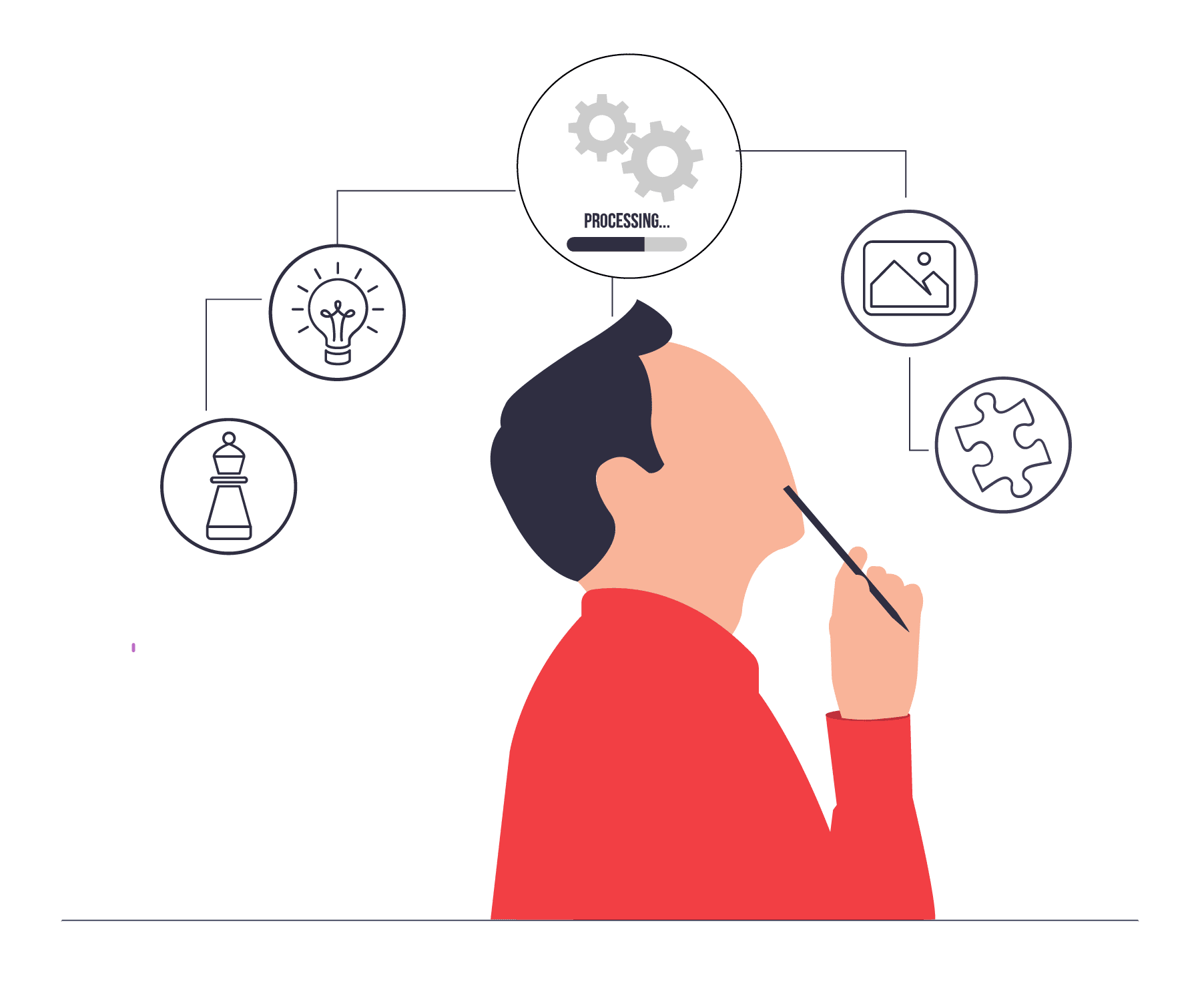In the dynamic landscape of modern business, organizations recognize the paramount importance of human resources in driving success. The strategic alignment of human resources with organizational goals has become a pivotal factor in maintaining a competitive edge. This is where strategic human resource planning comes into play. In the digital age, the marriage of technology and human resource planning has ushered in a new era of efficiency and effectiveness.
According to a survey by the HR Technology Conference, 78% of HR professionals believe that adopting advanced HR technology is crucial for strategic planning success. Learn how the latest HR tech tools can supercharge your strategic HR initiatives and drive long-term organizational growth.
In this blog, we will delve into the ways technology can be harnessed to support and enhance strategic human resource planning, ensuring that HR initiatives are not only well-informed but also optimized for maximum impact.
Understanding strategic human resource planning
Strategic Human Resource Planning is the compass that guides an organization’s workforce management towards its long-term objectives. In essence, it’s the art of proactively aligning human resources with business goals to achieve optimal outcomes. This process involves foreseeing future skill requirements, anticipating shifts in the job market, and devising strategies to ensure the right talent is in place at the right time. The primary objective is to bridge the gap between an organization’s present human resource capabilities and its future needs.
As technology continues to redefine industries, its impact on human resource planning is undeniable. Gone are the days of manual processes and instinct-based decision-making. Today, technology plays a pivotal role in collecting and analyzing vast amounts of data, offering insights that drive strategic choices. This merger of HR and technology allows organizations to make well-informed decisions, anticipate workforce trends, and design actionable plans to attract, develop, and retain top talent.
The advent of digital tools has transformed various HR functions. Recruitment and selection processes are streamlined through applicant tracking systems and AI-powered candidate assessments. Employee training is enhanced with e-learning platforms, offering personalized development paths. Performance appraisal systems are digitized, providing real-time feedback and data-driven insights. Moreover, these technologies allow HR professionals to focus on strategic thinking and value-added tasks rather than being bogged down by administrative chores.
In conclusion, understanding strategic human resource planning involves recognizing its pivotal role in organizational success. In today’s tech-driven world, the fusion of human resource planning and technology empowers HR teams to make smarter decisions, optimize workforce management, and contribute significantly to an organization’s overarching strategy. The following sections will delve into the myriad ways technology can be harnessed to bolster different aspects of human resource planning, revolutionizing how organizations approach their most valuable asset: their people.
Leveraging technology for human resource planning
Leveraging technology in the realm of human resource planning is akin to unlocking a treasure trove of opportunities for organizations seeking efficient, data-driven, and strategic workforce management. This dynamic collaboration between HR and technology offers a multifaceted approach that revolutionizes traditional practices.
Technology serves as a catalyst for enhancing the entire HR lifecycle. It streamlines data collection, management, and analysis, transforming what was once a time-consuming task into a streamlined and informed process. The utilization of advanced analytics and predictive modeling allows HR professionals to make decisions rooted in evidence, leading to more accurate workforce planning.
Moreover, technology aids in the identification of talent trends, both internally and externally. With HR software and platforms, organizations can pinpoint skill gaps, anticipate workforce fluctuations, and adapt their strategies accordingly. This proactive stance ensures that the right talent is available when needed, avoiding recruitment crunches and skill shortages.
Collaboration and communication are also bolstered by technology. Cloud-based solutions enable seamless sharing of information and remote collaboration, vital in the current landscape of flexible work arrangements. Furthermore, employee engagement and satisfaction can be boosted through technology-driven initiatives, such as wellness apps, performance tracking tools, and personalized development plans.
In essence, the integration of technology into human resource planning transforms a once reactive HR function into a proactive strategic partner. By providing real-time data, enhancing decision-making, and optimizing processes, technology empowers HR professionals to align their initiatives with the broader organizational goals. The subsequent sections will delve into specific ways in which technology enriches various aspects of HR planning, from recruitment and training to performance management and data security.
Benefits of integrating technology in HR planning
The integration of technology in human resource planning unfolds a plethora of compelling benefits that extend far beyond mere process optimization. This harmonious alliance yields substantial advantages, elevating HR planning into a strategic powerhouse for organizational growth.
One of the most noteworthy benefits is the enhancement of decision-making accuracy. Technology empowers HR professionals with real-time access to comprehensive data, transforming intuitive judgments into well-informed choices. These data-driven decisions align with the organization’s objectives and ensure that HR strategies are closely intertwined with overall business goals.
Furthermore, the efficiency and effectiveness of HR operations are significantly amplified through technology integration. Automating repetitive tasks, such as data entry and paperwork, frees up HR personnel to focus on value-added activities. This not only expedites processes but also empowers HR teams to delve into strategic endeavors like talent development, employee engagement, and succession planning.
The agility and adaptability of HR planning receive a considerable boost from technology. In an ever-changing business landscape, technology facilitates rapid adjustments in HR strategies to accommodate market shifts, technological advances, and industry trends. HR departments can swiftly pivot their approaches, ensuring the workforce remains aligned with the organization’s evolving needs.
The seamless communication and collaboration fostered by technology platforms dissolve the barriers between different branches of an organization. Cross-functional teams can work cohesively, ensuring HR strategies are congruent with broader company goals. Moreover, employee engagement is enriched through user-friendly digital tools, personalized communication, and self-service portals, leading to higher job satisfaction and productivity.
The benefits of integrating technology into human resource planning are diverse and compelling. From data-driven decision-making to operational efficiency, agility, and enhanced employee engagement, the fusion of HR and technology creates a symbiotic relationship that fuels strategic success. The subsequent sections will delve into specific applications of technology in key HR domains, illuminating how each facet contributes to holistic and dynamic HR planning.
Data-Driven decision making in HR
In the era of technology-driven advancement, the landscape of human resource planning has undergone a remarkable transformation through the lens of data. The convergence of HR and technology has led to a paradigm shift, where data-driven decision-making has become the cornerstone of effective HR strategies.
Technology has ushered in a new era of data collection, analysis, and utilization. HR professionals now have access to a wealth of information that spans employee demographics, performance metrics, training outcomes, engagement levels, and more. This trove of data empowers HR teams to extract insights, identify patterns, and predict trends that were once elusive.
Data-driven decision-making in HR planning begins with accurate and comprehensive data collection. HR software and tools capture a plethora of information related to employee performance, engagement surveys, training modules, and even recruitment channels. By centralizing this data, HR professionals gain a holistic view of the workforce, enabling them to make informed choices that align with organizational goals.
The application of analytics further elevates the value of collected data. Advanced algorithms can identify correlations, uncover hidden patterns, and predict future outcomes based on historical data. For instance, predictive analytics can forecast turnover rates, enabling HR to proactively implement retention strategies. This integration of data and technology ensures that HR planning is not just reactive, but anticipatory.
The fusion of technology and HR planning has given rise to a data-driven revolution. The ability to harness information, derive insights, and make decisions based on empirical evidence empowers HR departments to enhance the overall workforce strategy. The following sections will delve into specific areas where data-driven decision-making, facilitated by technology, reshapes HR planning paradigms, contributing to strategic organizational growth.
Automated recruitment and selection
The landscape of recruitment and selection within human resource management has been drastically reshaped by the integration of technology. Automated processes have emerged as a game-changer, streamlining the talent acquisition journey and revolutionizing how organizations find and onboard new employees.
One of the most notable advantages of technology-driven recruitment is the efficiency it brings to the process. Traditional methods of reviewing resumes and conducting initial screenings are time-consuming and labor-intensive. Automated applicant tracking systems (ATS) not only store and organize candidate information but also employ algorithms to match job requirements with applicant skills, expediting the shortlisting process.
Moreover, technology facilitates a more comprehensive and unbiased evaluation of candidates. AI-powered assessments can gauge not only technical skills but also soft skills and cultural fit, reducing the risk of human biases. This ensures that organizations have a diverse and qualified pool of candidates to choose from, aligning with the principles of fair hiring practices.
Automated recruitment and selection also significantly enhance the candidate experience. With user-friendly interfaces, online applications, and prompt communication, candidates receive timely updates about their application status. This reflects positively on the organization’s image and enhances its attractiveness to potential talent.
The fusion of technology and HR planning has ushered in a new era of recruitment and selection. Automated processes not only increase efficiency but also promote fairness and candidate satisfaction. The subsequent sections will delve into other pivotal aspects of HR planning that technology has revolutionized, shaping the modern HR landscape into one that is data-driven, efficient, and strategically aligned with organizational objectives.
Employee training and development tech solutions
The realm of employee training and development has undergone a profound transformation with the infusion of technology. Traditional classroom-based training is no longer the sole approach; instead, a spectrum of digital solutions has emerged, reshaping how organizations nurture and enhance their workforce’s skillsets.
Technology-enabled learning, or e-learning, has revolutionized employee development. Online platforms offer a plethora of courses and resources that cater to various learning styles and preferences. From interactive modules to video tutorials, employees can access knowledge at their own pace, fostering a culture of continuous learning.
Personalization is another key benefit of technology-driven training solutions. AI algorithms analyze employee performance and preferences to recommend tailored learning paths. This approach ensures that training efforts are not generic but rather aligned with individual needs, enhancing engagement and knowledge retention.
Moreover, technology has transcended geographical boundaries, enabling remote and distributed teams to access training materials seamlessly. Virtual classrooms, webinars, and collaborative tools facilitate skill-building across diverse locations and time zones, fostering a sense of unity and cohesion.
The impact of technology extends beyond just the training phase. Performance monitoring and feedback mechanisms integrated into these platforms allow organizations to gauge the effectiveness of training initiatives. Data-driven insights guide HR teams in refining training programs to better meet the evolving needs of the workforce.
The landscape of employee training and development has been irrevocably altered by technology. E-learning, personalization, and remote accessibility have paved the way for a more agile, efficient, and responsive approach to nurturing employee skills. The subsequent sections will delve into how technology reshapes other dimensions of HR planning, emphasizing its role in cultivating a dynamic and adept workforce.
Performance management and appraisal systems
The traditional performance appraisal process has undergone a significant evolution with the infusion of technology into human resource planning. The incorporation of digital tools has not only streamlined the evaluation process but has also paved the way for more holistic and data-driven performance management practices.
Technology-driven performance management systems facilitate real-time feedback, enabling continuous communication between managers and employees. This dynamic approach replaces the once-a-year appraisal with ongoing discussions, ensuring that goals are aligned and progress is monitored consistently.
Additionally, technology allows for a more comprehensive assessment of employee performance. Metrics and key performance indicators (KPIs) are tracked digitally, offering a transparent view of achievements and areas for improvement. This data-driven approach enhances objectivity and reduces biases that might influence traditional evaluations.
360-degree feedback mechanisms, facilitated by technology, provide a more well-rounded perspective on an employee’s performance. Colleagues, peers, and subordinates can contribute their insights, offering a broader understanding of an individual’s contributions and areas of growth.
Performance management technology also aids in identifying trends and patterns across the workforce. Managers can analyze performance data to detect common challenges, skill gaps, and training needs. This information guides HR in designing targeted interventions to enhance overall team performance.
Technology has revolutionized the way performance management and appraisals are conducted. The shift towards continuous feedback, data-driven insights, and inclusive evaluations has transformed performance management into a strategic tool that aligns individual goals with organizational objectives. The subsequent sections will delve into other crucial dimensions of HR planning where technology’s impact has been transformative, highlighting the ways in which HR is evolving to meet the demands of the modern workforce.
Ensuring data security and privacy in HR tech
The integration of technology in human resource planning has brought about unparalleled advantages, but it also introduces a critical concern: data security and privacy. As HR departments rely more on digital tools to manage sensitive employee information, safeguarding this data has become an imperative responsibility.
With technology facilitating data collection, storage, and transmission, the risk of data breaches and unauthorized access escalates. Employee records, performance evaluations, compensation details, and even medical information are all potential targets for cyberattacks. To mitigate this risk, organizations must invest in robust cybersecurity measures to safeguard their HR systems.
Implementing encryption protocols and multi-factor authentication safeguards sensitive data from falling into the wrong hands. Regular security audits and vulnerability assessments help identify weak points that could be exploited by cybercriminals. Employee training on cybersecurity best practices is also vital to ensure that human errors, such as clicking on phishing emails, don’t compromise data integrity.
Equally significant is compliance with data protection regulations. Depending on the jurisdiction, laws like the General Data Protection Regulation (GDPR) or the California Consumer Privacy Act (CCPA) impose stringent requirements on how employee data should be collected, stored, and used. Failure to adhere to these regulations can lead to severe legal consequences.
In conclusion, the inclusion of technology in HR planning necessitates a robust framework for data security and privacy. While the advantages are substantial, the potential risks are equally significant. By proactively implementing cybersecurity measures, staying compliant with data protection regulations, and fostering a culture of privacy-consciousness, organizations can harness the benefits of technology without compromising the trust and confidentiality of their employees’ sensitive information. The subsequent sections will continue to explore various facets of technology’s impact on HR planning, emphasizing the critical balance between innovation and safeguarding employee data.
Conclusion
As we stand at the crossroads of human resource planning and technology, it is evident that the synergistic integration of these two domains holds immense promise for organizations seeking to thrive in a fast-paced and ever-evolving business environment. By embracing technology-driven solutions for recruitment, training, performance management, and beyond, HR departments can elevate their strategic contributions to the organization. As technology continues to advance, the possibilities for refining human resource planning are boundless. However, it’s crucial to remember that while technology empowers us, the heart of effective HR planning remains the people it serves. Striking the balance between technological innovation and the human touch is the key to unlocking a future where HR truly shines in its strategic endeavors.
Testlify offers a range of assessments and challenges that allow you to gauge candidates’ knowledge, problem-solving skills, and creativity in real-world scenarios. With our extensive test library, you can objectively evaluate candidates’ abilities, ensuring you shortlist the most talented individuals efficiently. Ready to unlock the potential of your hiring process with our talent assessment tool? Book a free 30-minute live demo with Testlify. Our expert team will guide you through the platform, showcasing relevant skill tests tailored to your organization’s needs. With our support, you can streamline candidate selection, saving valuable time and resources.








